Super Mario 3D All-Stars Review: Is it worth playing now?
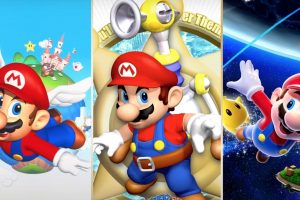
Super Mario 3D All-Stars released in 2020 for the Nintendo Switch, and promised a compilation of the plumber’s finest 3D outings: 64, Sunshine and Galaxy brought back in high-definition for the modern gaming age. Despite being a limited release, it’s still available now from second hand sellers, and represents the only official collection of some of Mario’s greatest 3D outings.
So is Mario 3D All-Stars worth playing now? Let’s find out…
(Grab Super Mario 3D All-Stars from Amazon here.)
The Good
Undying Nintendo quality: In these Good, Bad and Mixed sections, I’ll mention things pertaining to the specific games themselves, as well as general points about the collection as a whole in terms of its merits and drawbacks. However there’s no denying that, in the most core sense, the three games represent some of Nintendo’s finest achievements. Mario 64’s revolutionary leap from 2D to 3D remains impressive in that its almost shocking how much they got right on the first attempt. Sunshine’s tight controls with the FLUDD make Mario’s movement feel deep and satifying, and Galaxy is a phenomenal leap forward in linear level design. These are three all-time greats of gaming, and remaing so regardless of how shoddy the wrapper around them may be.
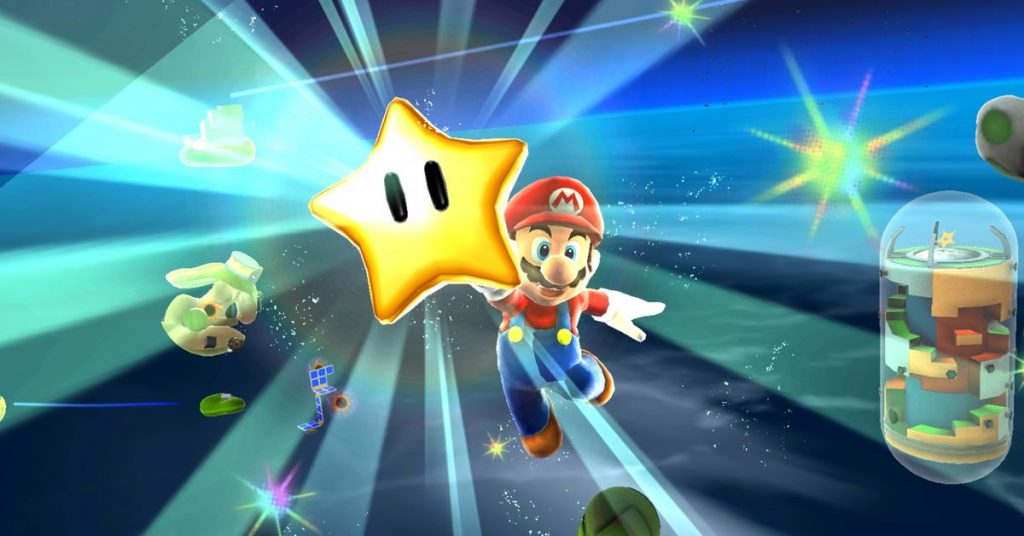
Humble beginnings: It is quite remarkable how well Mario 64 holds up. The blocky graphics retain their charm, and the game’s controls still put to shame most contemporary 3D platformers. I was impressed by how generous the content of the game feels, with 120 stars spread across 15 unique worlds, and of course the hub to end all hubs – Peach’s Castle – which is still yet to be bettered in any of the plumber’s subsequent outings. Mario 64 still feels epic and massive, full of secrets and wonder.
Sunshine movement: It’s more obvious to me now than it was in 2002 that the introduction of the FLUDD in Sunshine was a logical evolution of Mario’s movement, even if it makes Mario’s appearance a bit awkward. Retaining the majority of his moveset from 64 and adding a whole new array of moves using the FLUDD, allows you to string together and pull off satisfying feats of acrobatic magnificence. Mario has never controlled better than in Sunshine.
Sunshine difficulty: I really enjoy the ramped up difficulty in Sunshine. I remember it frustrating me as a kid, but now I appreciate it as another part of the evolution over ’64. Some of the Shines are tough, and mostly in a fair way, with precision platforming required for a lot of the Shines.
Galaxy presentation: Galaxy is just a joy for the eyes from start to finish. I remember wondering, when it first released on the Wii, how Nintendo managed to get what looked like a high-end Xbox 360 game running on Wii’s primitive hardware. Everything looks delicious and edible in Galaxy. The fuzzy pastel colours, the wonderful sheeny lighting, it’s just beautifully put together. Mario himself has never looked better, and in my opinon this even beats Odyssey in the visual department.
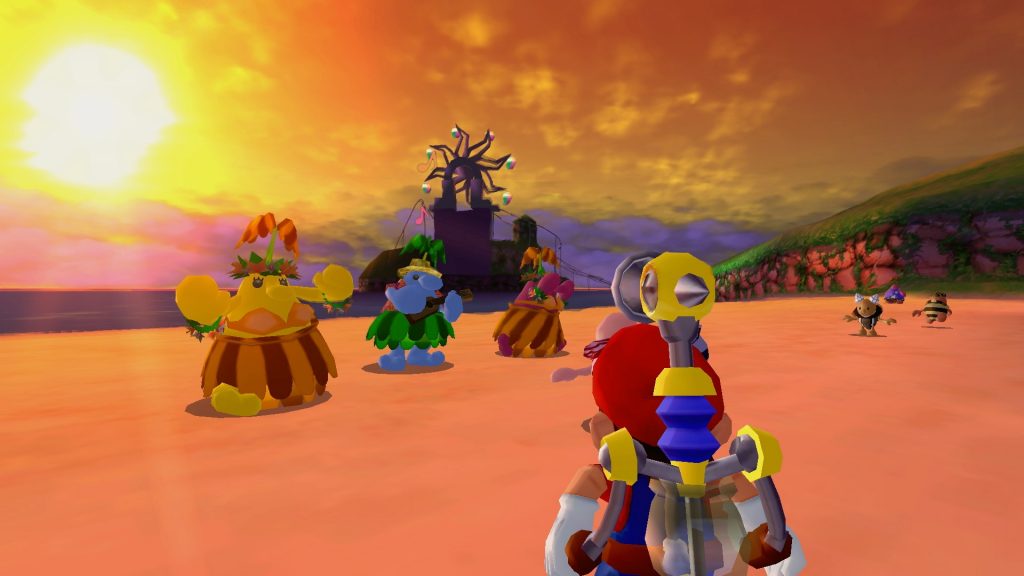
Music: Something that can be said for all three games is that the score is just magnificient across the board. Mario 64 cleverly uses a relaively small set of catchy tunes to great effect, iconic songs like the Bowser levels, Bob-omb Battlefield and Peach’s Caslte retain earworm status to this day. Sunshine’s tropical take on Mario classics are also brilliant, most notably the acapella tunes in the non-FLUDD levels, which remain one of the game’s highlgihts in general. Galaxy’s orchestrated score takes Nintendo music to a whole new level of grandeur, providing a perfect acompanyment to the larger than life space-faring levels.
Camera: I was surprised to find how well Mario 64’s camera held up, and playing across the three games gives a real appreciation for how it evolved. In Galaxy you effectively relinquish control of it, but it’s clear Nintendo have learned over the years where the camera should be at all times, so it’s never a problem. Galaxy’s 360 nature of design in most of its levels make this feat even more impressive.
The Mixed
Fidelity: Mario 64 really could’ve used a bit more of a graphical clean up than it received. This port is bare-bones and looks worse than the DS re-release, albeit with slightly sharper edges. Why is the M in Mario’s hat still pixelated? Why can’t I read the writing on the infamous ‘L is Real’ fountain? And why is pop-in and fog still so bad? The charm remains with Mario 64, but it really should’ve had more attention applied to it. Sunshine and Galaxy both look great on the other hand, with their up-rezzed shine well-applied to what were already lovely looking games. It just would’ve been great to see Mario 64 with more polish.
Sunshine inconsistencies: It’s well documented that Sunshine was unfinished when released, and in places it does show. Some levels feel strangely small and unfinished, and the final level and boss in particular were clearly rushed tacked on. It’s a shame as 80% of the game is brilliant and well-polished; once again if they’d bothered to put any actual effort into these ports they could’ve given us the ‘complete’ version that they’d originally planned, which would make this an essential purchase.
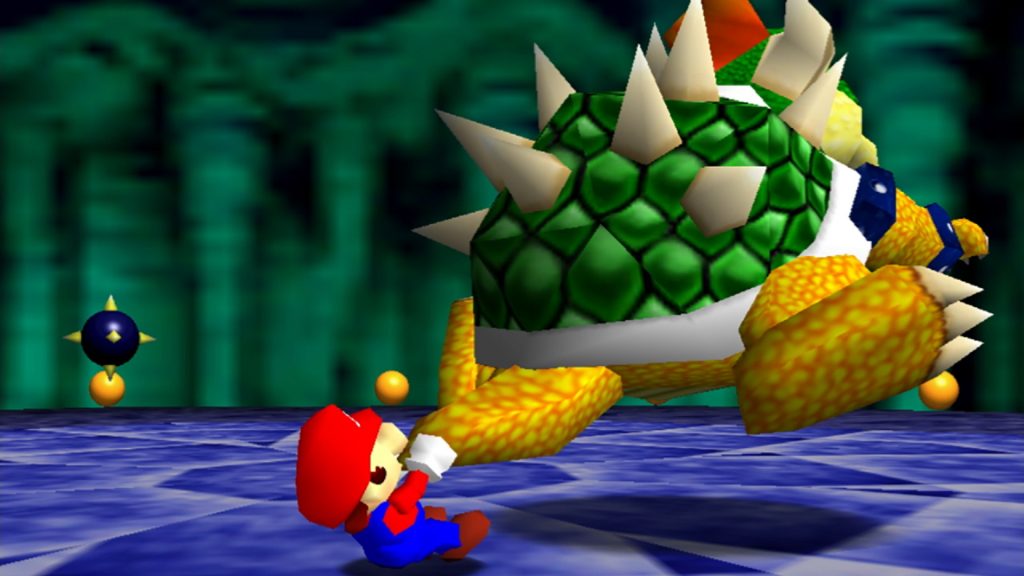
Linear Galaxy: I’ve always found it ironic that Galaxy, with all it’s new open celestial space, is a much more linear and constricted affair than Sunshine and 64. Each Power Star challenge is essentially comprised of just one path, albeit a path filled with brilliantly designed features and satisfying platforming. I personally prefer the wide open-ended level design of it’s predeccessors, as exploring a world with Mario is just as fun as precise platforming. I’d love a Galaxy game that let you play around with the gravity mechanic more, with a more sandbox feel, with different clever ways to reach the objective. Galaxy is brilliant as it is, but some more room for experimentaiton would’ve been welcome.
Galaxy difficulty: Where Sunshine ramped up the difficulty after 64, Galaxy brings things back down a notch. As a result Galaxy is very rarely frustrating, but equally a little more challenge for more skilled players would’ve been welcome. Particularly as Mario’s moveset has essentially be stripped down too with the removal of the FLUDD, trickier gravity-based challenges would have been a good addition. This was essentially addressed in Galaxy 2, but of course that’s nowehre to be seen in this collection…
The Bad
Hold on, where are the others?: Dubbing this collection ‘3D All-Stars’ is questionable at best and downright misleading at worst. Where’s Galaxy 2? Where’s the DS version of 64? 3D World? 3D land? Any additional content for Sunshine? Any cancelled 64DD content for 64? Giving us just these three games, whilst they are brilliant in their own right, feels lazy and cash-grabby.
Limited release is a joke: There was no conceivable reason to release this in a limited way, other than greed via creating artificial scarcity. I understand a limited physical release, but restricting things digitally makes no sense. Now anyone who wishes to buy this (though I wouldn’t advise it) is forced into the inevitably-inflated second hand market. Shameless stuff from Nintendo.
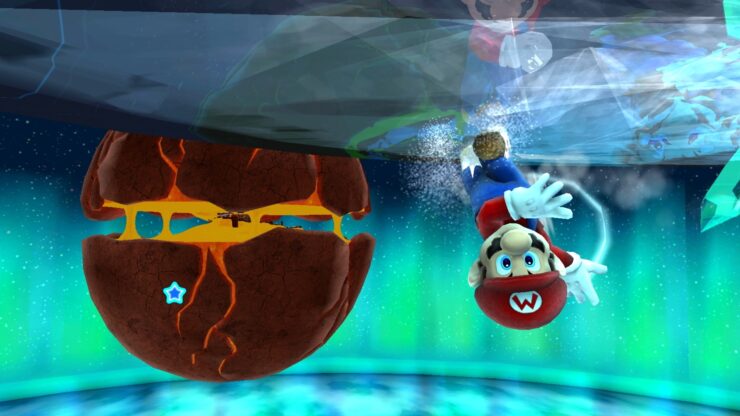
Technical improvements: The ‘HD updates’ these games have received here are almost beneath bare minimum expectations. Mario 64 isn’t in widescreen, and only Galaxy is 60fps. The Mario 64 modding scene has been around for years, and successfully had the game running in widescreen at 1080p 60fps. There’s absolutely no excuse here. Worse, Sunshine launched with some (now patched) bugs that are common amongst emulation, showing that this job was about as rushed as it gets.
Additional features: Along with the three games, we get…some music tracks. No fun bonuses, no director’s commentary, no additional cut content. Just the three games essentially in their launch state (or worse), and some music that you could easily find on YouTube or Spotify. Cheers then.
General laziness: I hate tor rag on Sunshine again, but it really is the worst offender when it comes to the shoddiness of the port/emulation. All of the commands and symbols are still the GameCube button references, which indicates that they’ve not put any thought into changing anything worthwhile. What’s maddening though is they have changed some things – the camera is now inverted on the X axis, whjereas it wasn’t in the original. Even worse still, when you go to shoot your FLUDD, the camera re-inverts! A baffling decision, and you can’t even change the button mapping.
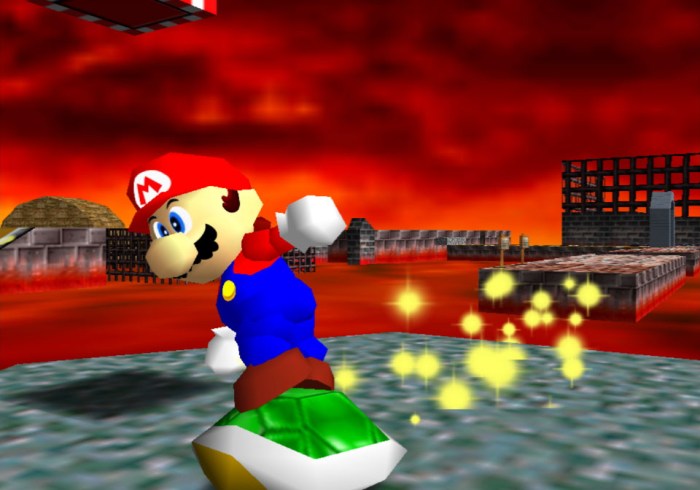
Galaxy Gryo: All of the games understandably have some weaker levels, but special mention needs to go to Galaxy’s gyro-based levels, where originally you’d tilt the Wii Controller to move Mario on a ball or racing a stingray or whatever. On the Wii, I’d say these were manageable rather than enjoyable, but here something’s gone very wrong with the way they’ve converted the gyro mapping to the Joy-Cons, and these levels are basically unplayable in the 3D Collection. Just ditch the motion control and let me control with the thumbstick Nintendo. We’re all collectively over motion control in games now (Wii Sports aside).
Overall
It saddens me to write that the Super Mario 3D All-Stars Collection is something of a disgrace. These three games deserved so much more than this lazy cash-grab of a collection, and I just can’t recommend it. You’re better off either playing these games on their original systems, or frankly setting up some emulation on your PC/Mac. Such a misstep from Nintendo. 3/10.
Check out more reviews here.
Buy Mario 3D All-stars from Amazon here.